 My first sewing machine was my grandmother's "Singer" with a bullet-shaped shuttle and a manual drive.
My first sewing machine was my grandmother's "Singer" with a bullet-shaped shuttle and a manual drive.
I must say that this machine was "heroic": it crossed the Soviet empire three times. First from Blagoveshchensk on the Chinese border to Znamenka in the Kirovograd region in Ukraine, then to Novosibirsk and the last trip back to Ukraine in Krivoy Rog.
Mom also started sewing on this "Singer", but "one fine day" in 1972 she bought "The Seagull" with a large polished pedestal.
It was HAPPINESS! "Zigzag" and a few more lines!
You probably also had this miracle of Soviet technology?
My "Tea" served me well. What I just did not sew! Dresses, coats, toys, bags, jackets, coats, trousers… Everything!

 But as time passed, many parts of the "Seagull" wore out and mechanics conjured more and more often over it.
But as time passed, many parts of the "Seagull" wore out and mechanics conjured more and more often over it.
In the 90s, we were “opened abroad” and various goods poured in from there. And with them "sailed" and "my favorite Chinese" - an overlock made in China according to the type of Soviet industrial overlock of the 51st class.
To buy it, I had to sell expensive musical instruments and forget about music.
With the purchase of an overlock, you could start your own little business ...
"Seagull" and "Chinese" (I don't like to call it "51st") served me "faithfully" until 2007.
New technologies have come, new fabrics have appeared that require different processing methods, and I bought a household sewing machine, a carpet lock and an industrial universal sewing machine similar to the 22nd grade.
I deliberately do not name stamps, so as not to confuse dear readers.
Let me tell you how I chose them.
I confess that I traveled all over the store in my city and came to some conclusions.
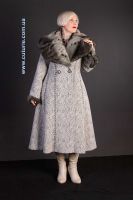 Conclusion one. Prices from leading manufacturers of sewing equipment differ little in similar models. And the set of functions and lines of machines with the same price are also almost the same.
Conclusion one. Prices from leading manufacturers of sewing equipment differ little in similar models. And the set of functions and lines of machines with the same price are also almost the same.
Second conclusion. When you ask in a company store what their brand is better, they always answer that they have a better line and the machine “sews thick”. When asked about the worse machines of competitors, they always answer that they have a worse line. When comparing the lines, it turns out that the quality is the same.
The conclusion is the third, concerning expensive sewing machines with a smaller set of lines and adjustments. When I asked how these expensive machines are better (after all, for this price you can buy a machine with a much larger set of lines), they answered me -
1) "metal under-needle plate",
2) "vertical shuttle",
3) "metal parts inside",
4) "sews thick".
We will analyze each "advantage" separately.
 The first is a metal under-needle plate. In fact, in all household sewing machines, the under-needle platinum is metal. Plastic can be a cover located in front of this very plate. I have just such a machine. And I will say that it does not bother me, quite the contrary. For example, I am stitching the bottom of the product with some intricate line (photo on the left) and it is important for me that the bottom thread does not end in the most visible place. The cover covering the shuttle set is transparent, the bobbin is also. I can monitor the thread consumption and change the bobbin in time.
The first is a metal under-needle plate. In fact, in all household sewing machines, the under-needle platinum is metal. Plastic can be a cover located in front of this very plate. I have just such a machine. And I will say that it does not bother me, quite the contrary. For example, I am stitching the bottom of the product with some intricate line (photo on the left) and it is important for me that the bottom thread does not end in the most visible place. The cover covering the shuttle set is transparent, the bobbin is also. I can monitor the thread consumption and change the bobbin in time.
If there are doubts about the strength of the cover, then they are also not justified. The fact is, household sewing machines with a “deflecting needle” have a more fragile place. Yes, yes ... where the needle bar is attached! If you inadvertently pull the fabric, take a too heavy product and turn it under the presser foot, it is likely that you will move the needle bar.
That is, it is IMPOSSIBLE to press, pull, push, apply force to ANY household sewing machine. Even if they have a vertical shuttle and a metal cover in front of the needle plate.
The second is a vertical shuttle. Again they say “the line is better”, but I did not see the difference. In an industrial machine, the shuttle is located vertically, in a household one - horizontally. Both work well, and you can’t distinguish a straight line by eye.
The third is the metal parts inside. Remember "The Seagull" - "a masterpiece of Soviet engineering." This machine sewed EVERYTHING and it had plastic parts. Despite this, she served my family for more than 30 years, and 20 of them were very harshly exploited. By the way, there is very little plastic in modern household sewing machines, and the metal parts are really quite flimsy.
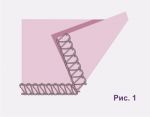 And the most interesting point - the machine sews thick. As I said above, I had (not from a good life) to sew everything at the household "Teagull": from chiffon to winter coats and leather goods. Outcome: I “pulled out” the needle bar. And it was not the thickness of the fabric that affected this (the lift of the foot was increased), but the weight of the products.
And the most interesting point - the machine sews thick. As I said above, I had (not from a good life) to sew everything at the household "Teagull": from chiffon to winter coats and leather goods. Outcome: I “pulled out” the needle bar. And it was not the thickness of the fabric that affected this (the lift of the foot was increased), but the weight of the products.
The needle bar, of course, was not literally torn out of the machine, just the movable fasteners were slightly bent and loosened. From this, the zigzag became narrow, and the rest of the pretty lines stopped working at all. Over time, the so-called "crackers" were also demolished, which displace the needle bar to obtain a zigzag and other artistic lines.
The "tea", of course, was "saved" - the mechanic removed all the "crackers" and "healed" the needle bar mount.
This means that it turns out that the thickness of the fabric package being sewn is not the “main evil”, for a machine with a shifting needle bar, the weight of the product is more dangerous.
When all the hardware stores were gone through, and the sellers were brought to a nervous breakdown, I settled on a store that has a full-time mechanic and the opportunity to apply for non-warranty repairs. It was of no use to me later. Or maybe it didn’t come in handy because the mechanic was on staff and it was he who “produced” new cars for the trading floor? ..
In a word, I chose a household sewing machine ... at a price that I was ready to pay. It has 66 stitches and three buttonholes that I don't use.
Separately, it should be said about the loops: they are only suitable for thin fabrics and do not work in places where there are differences in thickness. This is on all household machines.
Overlock. I chose a Japanese-made carpet, but I don’t use most of the functions. My "jap" allows you to customize 15 types of seams. Of these, two knitted (3 and 4 thread), four overlock (2 and 3 thread), two seams with  roll stitch (2 and 3 thread), chain stitch, chain stitch variations with overlock stitches and four cover stitches.
roll stitch (2 and 3 thread), chain stitch, chain stitch variations with overlock stitches and four cover stitches.
As a result, I use the usual three-thread overlock stitch (Fig. 1) and the four-thread “knit” stitch (Fig. 2). Very often I use a three-thread stitch with a rudder (Fig. 3 and the last photo).
I used the stitching a couple of times, since for this seam the carpet lock needs to be rebuilt. This is quite a long time (15 minutes, if skillfully). And the trouble is that you need to rebuild for sewing one product twice. It is very inconvenient and then the product becomes like a factory one, which annoys me very much.
So I consider the choice of a coverlock unsuccessful, although it works fine.
If I had chosen now, I would have bought an overlock with an edge, knitted and rolled seam. And, if I sewed a lot of knitwear, I would buy a separate sewing machine. For the price, I think they would be equal to my carpet in total. Although, maybe I wouldn’t buy it, but I would get by with a double needle ...
It remains to tell about how I chose an industrial universal machine.
Let me take another little digression into my past.
When I worked at the factory, I sewed all my products in the following way: just before lunch, I walked along the stream and handed out the “knots” of the product to the girls working in different operations. Five minutes later I collected it, carried it to the iron and distributed it again. In half an hour the product was ready. The only difficulty was that it was necessary to guess that the thread sewed with the necessary threads and that the necessary devices were installed and configured (for example, for edging or for sewing in piping).
I must say that the equipment in our garment factory is wonderful. Universal machines have a pneumatic presser foot lift system, an automatic thread trimmer, the backtack is automatically adjusted ... I'm not talking about the upper fabric conveyor! Not a technique - a dream!
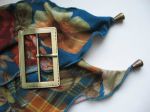 Of course, when choosing a machine for home, I wanted it to be as close to ideal as possible. But I was embarrassed by the cost of the ideal, which exceeded the cost of the usual one by 4-5 times. Therefore, I settled on an analogue of class 22 of the “yellow” assembly. I do not regret the choice.
Of course, when choosing a machine for home, I wanted it to be as close to ideal as possible. But I was embarrassed by the cost of the ideal, which exceeded the cost of the usual one by 4-5 times. Therefore, I settled on an analogue of class 22 of the “yellow” assembly. I do not regret the choice.
It was on her that I sewed all my coats (see photo on the right).
Coats and fur coats - my patterns
Women's coats Fur coats Jackets Capes
A person who is not familiar with sewing equipment is likely to ask the question: why do you need an industrial machine with a small amount of work?
I will list all the advantages of an industrial universal in order.
The first advantage: speed. On my machine, you can sew at a speed of 2500 rpm. There are machines with a speed of 5000 and even 7000. But at home and for individual tailoring, such speeds are not useful. In addition, work at high speeds imposes increased requirements on the installation of the industrial table. If I squeeze the maximum, I have to take out a drawer with small things attached to the table. And for 7 thousand, I think, more serious shock absorbers and adjustment of the machine itself will be required.
Second: the ability to install professional fixtures on the machine and use the possibilities of speed, for example, on edging or on the hem of the bottom.
Third: the reach of the "sleeve" of an industrial machine is greater than that of a household one. This makes it easier to sew large items. For example, my winter coat (when I turned the collar with faux fur) barely passed under the “sleeve” when the line was turned. And the "house" would have broken for sure.
Fourth: promstol - is a continuation of the "head" of the machine and is very convenient for large products.
Fifth: reliability - metal parts, including the body, deviations of the needle bar are NOT provided for by the design.
Sixth: lifting the foot with a knee lifter also distinguishes an industrial machine from a household one. However, the spring at the foot is very tight, so lifting it manually is problematic.
And the improvement that appeared in the "universal" - pouring oil into the pan. Very comfortably. Does not smear the product. It is also convenient that the “head” of the machine is sold immediately with a motor suitable for household electrical networks and with an industrial table. So it's simple! Choose a technique for your specific task. Proceed from what you sew and in what volumes.
Good luck!

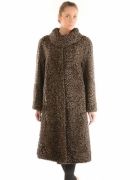






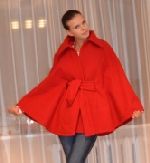

 Join my community on Viber...
Join my community on Viber...











